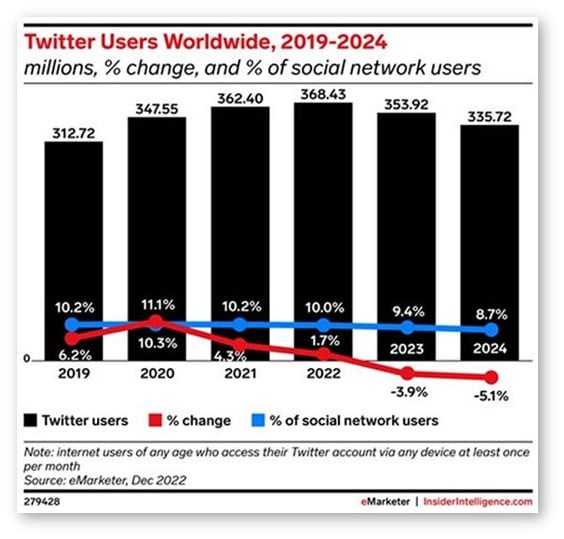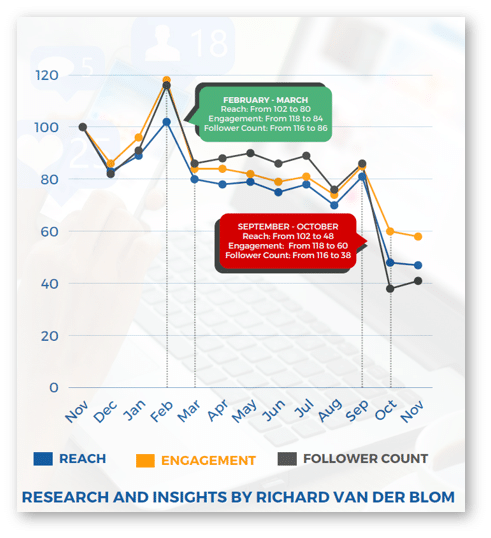What is the LinkedIn algorithm and why is it important?
The LinkedIn algorithm is the automated decision-tree that decides who sees your organic LinkedIn posts.
If you knew exactly how the algorithm worked, you could optimise your posts to maximise reach within your target audience. This could help you build an engaged company page or personal account and might save you money on advertising.
For this reason, LinkedIn keeps the details of its algorithm tightly secure.
So, assuming you can never know exactly how it works, is trying to understand the LinkedIn algorithm really worth your valuable time?
It feels like stating the obvious, but if you’re in B2B, LinkedIn really ought to matter to you. It is by far the most important global business network for identifying and reaching customers.
The decision-makers and influencers within your target customers are almost certainly on LinkedIn. In December 2023, the platform surpassed 1 billion active users and LinkedIn offers lots of routes, paid and unpaid, to connect with whichever of these members matter to you.
To add to this, while LinkedIn has grown, its competition has dwindled. A few years ago B2B brands would invest in advertising on Twitter. Since it morphed into X, very few see the point in doing do. According to eMarketer, even X user numbers have started to fall. At the same time, Facebook, Instagram and TikTok often barely register for B2B brands seeking scalable marketing options.

Twitter/X user numbers have started to fall
For B2B, LinkedIn really is the main event.
Yet, for anyone who’s ever posted a company update to LinkedIn and watched tumbleweed roll by as it picks up three Likes from close colleagues: organic posting can be a thankless task.
Indeed, data suggest that LinkedIn currently shows organic company posts to just 2% of that company’s followers.
With results like that, why would you bother?
And, it’s true, many companies don’t bother. Instead they invest heavily in LinkedIn’s various advertising options to reach their valuable target audiences.
But LinkedIn advertising is notoriously expensive. I’ve seen companies spend $1,000 landing a single MQL. This may be an acceptable return compared to the alternatives ($50k for a trade show, anyone?), but surely there are better solutions.
Could organic posting deliver more value for B2B brands?
Faced with the growing demand for leads and spiraling cost of advertising, this is the question many B2B marketers are returning to.
But the road ahead is long and hazardous. Review any selection of company posts on LinkedIn and the same conclusions will strike you:
- They are self-promotional
- They are universally dull
- They are visually bland (often over-branded)
- They don’t start conversations
- They don’t provide value
Company posts usually ignore all best practice and lead, inexorably, to low levels of reach, engagement and followings.
This is the status quo.
But it doesn’t need to be. Understanding the LinkedIn algorithm provides an opportunity for you to ensure your posts meet best practice requirements and therefore reach your target audience.
For example, most B2B marketers aren’t aware that the algorithm reportedly (as of February 2024) penalises company posts that include links, reducing reach by up to 35%.

LinkedIn algorithim changes in 2023 reduced reach, engagement and follower growth (full report from Richard Van Der Blom)
Knowing about this and other important factors: consistency of posting, post length, use of keywords, quality of comments, quality of commenters, timings of comments etc. could help you ensure your content reaches the right people.
Of course, the bottom line is that your posts must provide value.
In February 2024, LinkedIn Editor in Chief, Dan Roth, downplayed the value of learning ‘algorithm hacks’ in an interview with Entrepreneur.com.
He urged users to focus instead on the quality of their content, saying: “If you can just share knowledge into the world, I guarantee you things are going to work out”.
It’s true that the algorithm is forever changing, so tactics that work today may not work tomorrow. Just in 2023 there were several major updates to the algorithm that saw average reach and engagement numbers plummet.
But these algorithm tweaks were ultimately about LinkedIn shifting reach from low-grade ‘amplifiers’ to high-value ‘subject matter experts’.
The reported 66% drop in average reach was actually a boost for anyone posting high-value content aimed at a niche audience.
LinkedIn may not want everyone to adopt best practices, as they’d need to find another way to grade our content. But understanding the algorithm, at least for now, could provide you with a genuine competitive advantage.
For the sake of a little learning, why would you give that up?
If you need support with your LinkedIn marketing, please get in touch.


